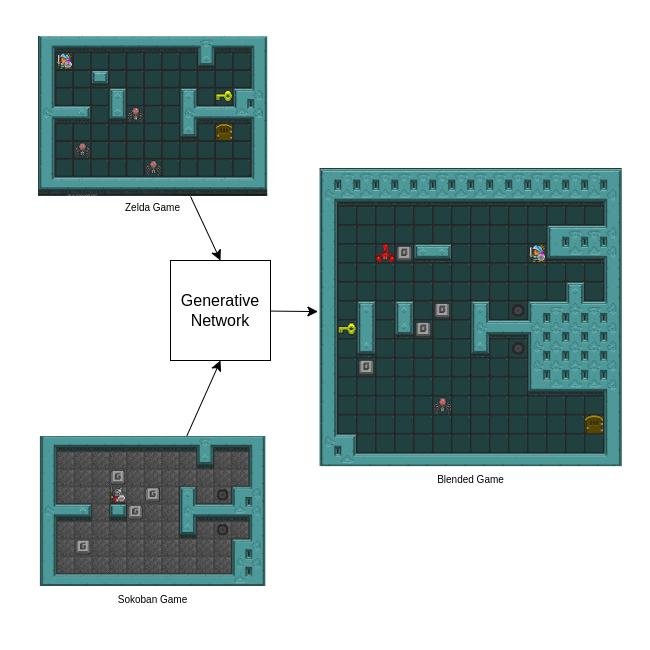M.S. Candidate: Ömer Faruk Karakaya
Program: Information Systems
Date: 24.07.2023 / 15:00
Place: A-212
Abstract: In this thesis, the objective is blending game levels in a way that retains and ensures playability, using advanced procedural content generation techniques. The motivation stems from the aim to increase the diversity and replayability of games and concurrently reduce the extensive effort required for manual design. A novel approach to game blending is examined, unifying The General Video Game AI (GVGAI) game descriptions with level representations, resulting in a solution with broad applicability across a multitude of games. To address the research question effectively, the use of Variational Autoencoder Generative Adversarial Networks (VAEGANs) is introduced, a pioneering hybrid model which combines the unique strengths of Variational Autoencoders (VAEs) and Generative Adversarial Networks (GANs) to facilitate superior level blending and generation. A focus has been placed on enhancing playability, incorporating A* algorithms and Reinforcement Learning (RL) agents to optimize latent vectors in generative networks via the Covariance Matrix Adaptation Evolution Strategy. Through several experimentations, the performance of GANs, VAEs, and VAEGANs in blending game levels was assessed, discovering their capacity to create novel, diverse, and playable mixed levels. VAEGANs emerged as the superior model, producing distinct, intricate, and varied levels surpassing the capabilities of VAEs and GANs. This enhanced performance owes its success to the combination of the encoder-decoder architecture and adversarial training, allowing VAEGANs to utilize the strengths of both models while avoiding some of their individual drawbacks.
